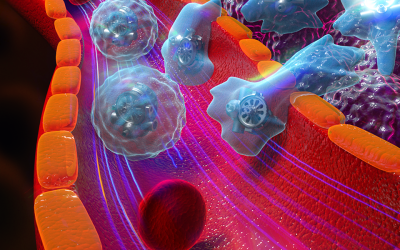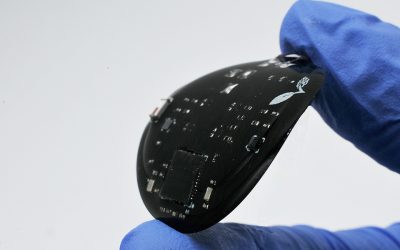How a nanoparticle behaves in the body is determined by the properties of the substance it consists of. The size of the particles is of secondary importance. If a biological effect is present, it can often be weakened by a technique known as functionalization. These are results of the NanoGEM (Nanostructured materials – Health, Exposure and Material Properties) project initiated by the German Federal Ministry of Education and Research (BMBF) and involving 19 research institutions and companies, which have been working together for three years. Research topics included the absorption and distribution of nanoparticles in the human body depending on their size, structure and surface properties. The project, on which the BMBF and industry have jointly spent about €6.5 million, was led by the Institute of Energy and Environmental Technology (IUTA) in Duisburg, Germany.
Altogether 16 different materials were examined by the researchers over the last few years, among other things to find out what happens to different nanoparticles when they are inhaled or ingested and how they behave inside the body. Test substances were silicon dioxide (SiO2) and zirconium dioxide (ZrO2), which are applied, for example, in paints to increase their scratch resistance, as well as silver particles (Ag) used in printing inks for solar technology. For the first time, not only the pure particles but also the functionalized particles were tested. In the latter, organic molecules are bound to the surface of the particles to improve properties such as processability, solubility or stability of the products.
The result: “The main factors that determine whether there is a toxic effect are the actual material properties, in this case of silicon dioxide, silver or zirconium dioxide,” explained Dr. Wendel Wohlleben, who headed BASF’ s activities. The company has contributed to the manufacturing and characterization of the nanomaterials, analyzing the lifecycle and toxicity, as well as to the risk assessment. A toxic effect that was the same for all nanomaterials and triggered alone by the small size could not be verified emphasized Wohlleben. “One important result of the study is that an existing toxic effect can be reduced through functionalizing the nanoparticles by adding a functional group of the kind present in the finished product,” he added. This is because potential reactions on the particle surface are shielded by the functional groups. Moreover, some particles are eliminated again from the body more easily.
These findings will also help researchers in risk assessments of other nanomaterials. “If this result is confirmed in further studies, in future we would no longer have to examine all differently functionalized particles of a material to conduct a safety assessment, but could organize the materials into groups,” said Wohlleben. ”A reliable risk assessment would then be easier and take less time.” This is a great advantage, especially when studying the effect of nanoparticles that are inhaled.
Source: BASF
















